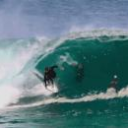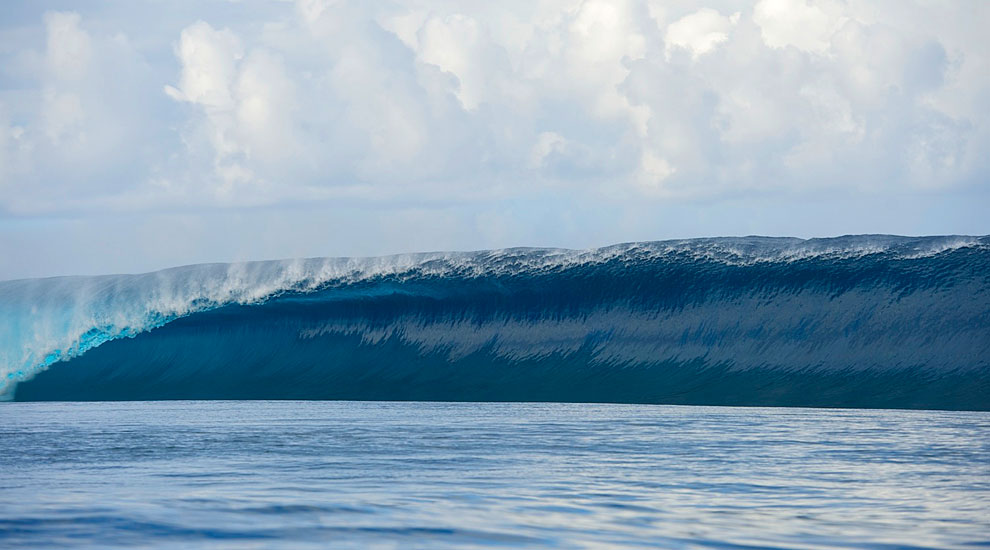-
Posts
3,203 -
Joined
-
Last visited
-
Days Won
215
Content Type
Profiles
Forums
Events
Everything posted by RAnDOOm
-
The Road to Forgotten Hope 2.53 Part 1 Hello and welcome back to another Forgotten Hope 2 update. It has been just under two years now since a Road to... news update was last posted here, and we are pleased to be able to say that the wait is over. Forgotten Hope 2.53 will be going live on: Friday 25th May 2018 We'd all like to extend a big thank you to all our fans who have continued to play over the last decade or more, and we hope to see you on the servers this Friday! Additionally, we would like to thank our team of betatesters for their dedication to improving our work, as well as our developers for the time and effort they put in to make things happen. Last but not least, none of this would be possible without the web hosting generously provided by Fluestertuete. Lets kick things off by showing off the trailer for version 2.53 made by @Hawk: Be sure to come back as the week progresses to see more news before the final update! That's all for today, but be sure to come back later for another update. Until then, feel free to visit our Discord, our public forums, and/or our Twitter and Facebook pages to discuss this update and other news. ________________________ Original news post here: http://forgottenhope.warumdarum.de/news.php?id_news=513
-
Congratulations @RayderPSG!!!
-
Happy Birthday @GracefulOutlaw !
-
I will be on TeamSpeak this afternoon to test the game out.
-
Crazy video. Well worth the 10m .
-
Are we really the most intelligent beings to have lived on Earth ? Could there have been an advanced civilization on our planet long before mankind appeared on the scene ? It's an idea that has been debated for years, and while we typically assume that our civilization is the first and only to have existed on Earth, can we be sure that this is really the case ? "Now, I don't believe an industrial civilization existed on Earth before our own - I don't think there was a dinosaur civilization or a giant tree sloth civilization," said study co-author Adam Frank. "But the question of what one would look like if it did [exist] is important. How do you know there hasn't been one? The whole point of science is to ask a question and see where it leads." "That's the essence of what makes science so exciting." Finding evidence of such a civilization may be a lot more difficult than it sounds. The fraction of life that does get fossilized, even when it has been around for millions of years, is typically extremely small. Scientists also believe that if, for example, mankind disappeared overnight, it would take around four million years for all traces of our civilization to disappear from the planet's surface. Eventually, given enough time, it might be very difficult to find any sign that we were ever here at all. Full article: https://www.livescience.com/62338-intelligent-life-on-earth-before-humans.html
-
Happy Birthday @Regaizz !
-
Indeed. If this actually goes forward, it could be live changing for the whole planet. 91% of all the plastic in the world is not recycled..... Its already out of control....
-
https://www.imdb.com/title/tt5580540/ "Joel and Sheila Hammond are everyday suburban real estate agents in Santa Clarita, California The couple face a series of obstacles when Sheila has a physical transformation into a zombie and starts craving human flesh. With Joel and the family trying to help Sheila through the trying time, they have to deal with neighbors, cultural norms and getting to the bottom of a potentially mythological mystery." Started to watch this last night. Very very funny comedy show. Highly recommend it.
-
Could an end to plastic pollution be in sight ? Scientists have inadvertently created a mutant enzyme capable of breaking down common waste plastics. In a breakthrough that could prove invaluable in the battle against ocean pollution, scientists studying a type of plastic-eating bacterium found in Japan have managed to produce an enzyme that has proven enormously effective at breaking down PET (polyethylene terephthalate) plastic. The achievement was entirely accidental as the team had only tweaked the enzyme in order to learn more about how it had evolved, not to deliberately improve its effectiveness. "What actually turned out was we improved the enzyme, which was a bit of a shock," said study leader Professor John McGeehan of the University of Portsmouth. "It's great and a real finding." Remarkably, the new enzyme starts to break down plastic within a matter of days. "What we are hoping to do is use this enzyme to turn this plastic back into its original components, so we can literally recycle it back to plastic," said McGeehan. "It means we won't need to dig up any more oil and, fundamentally, it should reduce the amount of plastic in the environment." Full article here: https://www.livescience.com/62328-plastic-eating-enzyme.html
-
Where you guys able to solve the problem ?
-
The Apollo 17 landing site cameos in a new video from NASA's Lunar Reconnaissance Orbiter. Images from NASA's Lunar Reconnaissance Orbiter (LRO) are not only helping planners with future human missions to the moon, but they are also revealing new information about the moon's evolution and structure. A new NASA video, posted on YouTube, features more than half a dozen locations of interest in stunning 4K resolution, much of it courtesy of LRO data. NASA also highlighted the individual sites in a Tumblr post that delves deeper into their geology, morphology and significance.LRO has been circling the moon since 2009 and has made a range of discoveries at Earth's closest large celestial neighbor. [More Amazing Moon Photos from NASA's LRO] The orbiter has found regions of possible ice in permanently shadowed regions of the moon, inside sheltered craters and caves. It provides elevation data and mineralogical mapping to help scientists better understand the age of craters, lava basins and other features on the moon. And it also acts as a scout for future human missions. That role came into focus late in 2017, when the Trump administration tasked NASA with heading back to the moon before journeying to Mars. Future landing missions could take advantage of mountain peaks or crater rims at the moon's north pole, the video's narrator explains during the lunar tour. LRO scientists have modeled the sunlight in these regions across centuries of time. By zooming in on the spots with consistent sun exposure, mission planners can put solar panels there to support future human missions. Full article here: https://www.space.com/40274-nasa-moon-in-4k-video-tour.html
-
- 1
-

-

FH2 CMP Campaign #3 Map Testing Event - Come Join Us!
RAnDOOm replied to Quicksilver's topic in General Announcements
Download complete! Ready to rock! Lets go! -
Could something like a T-800 one day become a reality ? A university in South Korea is allegedly working with a defence company to build autonomous killing machines. So far, more than 50 leading academics from 30 countries have signed an open letter calling for a boycott of the Korea Advanced Institute of Science and Technology (KAIST) because it is reportedly working with defence manufacturer Hanwha Systems to develop autonomous weapons. "There are plenty of great things you can do with AI that save lives, including in a military context, but to openly declare the goal is to develop autonomous weapons and have a partner like this sparks huge concern," said boycott organizer Toby Walsh from the University of New South Wales. "This is a very respected university partnering with a very ethically dubious partner that continues to violate international norms." The move comes just days before a UN meeting in Geneva on the subject of autonomous weapons with more than 20 countries already calling for a complete ban on all such systems. KAIST president Sung-Chul Shin however remains adamant that the group's fears are unfounded. "I would like to reaffirm that KAIST does not have any intention to engage in development of lethal autonomous weapons systems and killer robots," he said. "As an academic institution, we value human rights and ethical standards to a very high degree." Full article here: https://www.theguardian.com/technology/2018/apr/05/killer-robots-south-korea-university-boycott-artifical-intelligence-hanwha
- 1 reply
-
- 1
-

-
Happy Birthday @HaLoAL!
-
33 years old. Still the Best in the World.
-

FH2 CMP Campaign #3 Map Testing Event - Come Join Us!
RAnDOOm replied to Quicksilver's topic in General Announcements
More FH2 action. I shall be there! -
untilVS ROUND 4 MATCH To be played between 27 March and 8 April TeamLeaders @RAnDOOm and @GGarrido (Use this topic to organize the match day and hour) Date 8 April 18hITC Map Luttich
-
untilVS ROUND 4 MATCH To be played between 27 March and 8 April TeamLeaders @Pr0z4c and @RayderPSG (Use this topic to organize the match day and hour) Date 7 April 18hUTC Map Luttich
-
Happy Birthday @Ensign_Steel!
-
Pieces of silver recovered from the wreck of the Whydah The grave is believed to be the final resting place of Captain 'Black Sam' Bellamy's 100-strong crew. Dating back 300 years, the site, which is located in a secluded area of Cape Cod, is thought to be where Bellamy's crew was buried after their ship, the Whydah Gally, was wrecked back in 1717. Around 100 sets of remains have been found so far, however Bellamy himself, who was once dubbed 'the world's richest pirate' after raiding more than 54 vessels, was not among them. Instead, his body was thought to have been found during an earlier excavation of the wreck itself. "He was known as the 'Prince of Pirates' because of his gentle but stern nature and he was able to mitigate potentially violent situations," said investigation leader Casey Sherman. Efforts are now ongoing to match the DNA from the body with that of Bellamy's living descendants. "The evidence that it's Bellamy's [body] is exceedingly compelling," said Prof Timothy Palmbach. "It was immediately next to a pistol that was proved to be Bellamy's without a shadow of a doubt." Full article here: https://www.stuff.co.nz/world/americas/102701847/worlds-richest-pirate-black-sams-grave-traced-300-years-on



